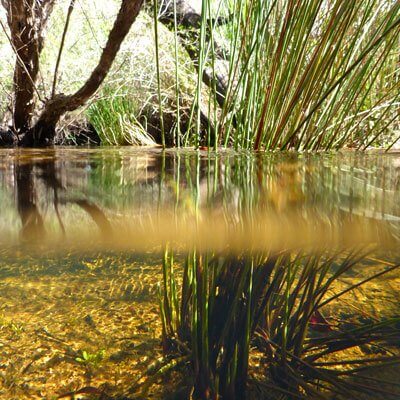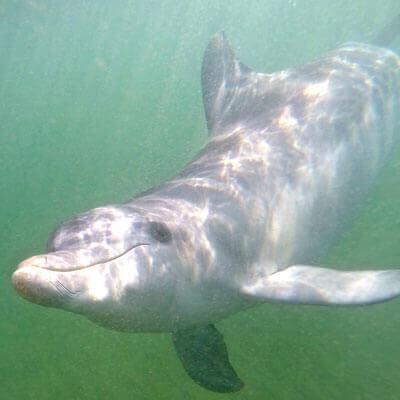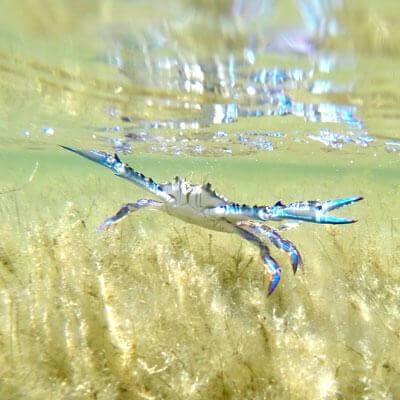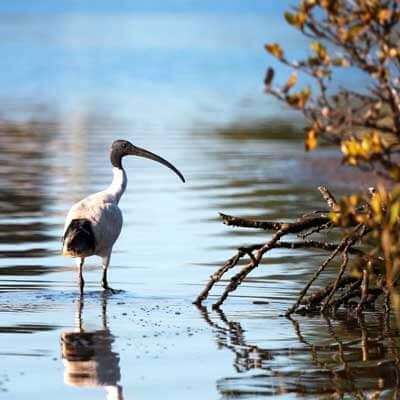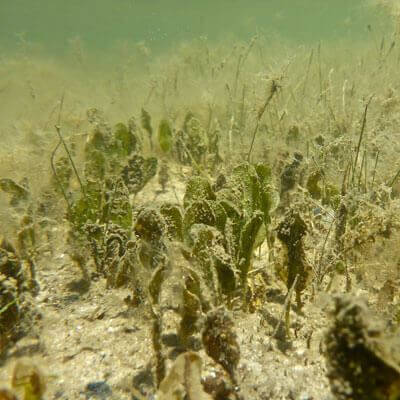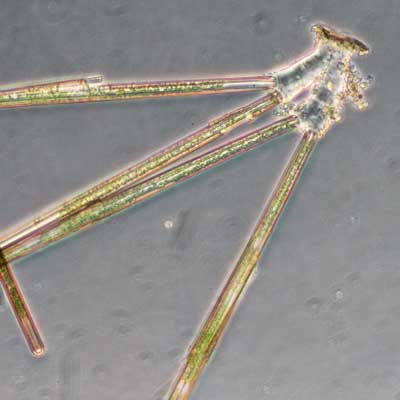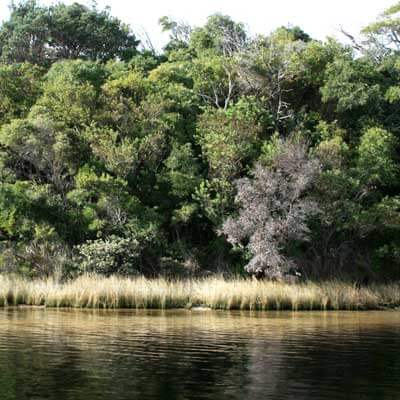Find out more
Bottlenose dolphins (Tursiops aduncus) are regularly sighted throughout the Leschenault Estuary and lower Collie, Brunswick and Preston rivers. Bunbury is known internationally for its dolphin population and is home to the Dolphin Discovery Centre which attracts thousands of visitors every year, contributing substantially to the local economy. The health of the estuary, and the prey in it, is crucial for the presence of these dolphins.
There are a group of 10-20 dolphins that use the estuary, depending on season. Research on the local dolphin population has been continuous since 2007 as partnership between Murdoch University and the Dolphin Discovery Centre. This research focuses on: abundance, movement patterns, home ranges, prey distribution, population genetics, health, and assessing potential effects of human activities on the dolphin population.
Generally, it is mothers and their calves that are seen in the estuary. The dolphins exhibit a seasonal pattern of residency in the estuary, with a greater presence over the winter, when the waters are cooler and prey is suitable. When conditions are favourable, the estuary provides a critical habitat for feeding, breeding and resting. Food resources (fish) are more concentrated in the estuary, and the shallow environment is thought to provide protection from predatory sharks. The dolphins that reside here do not venture far, usually only out to Koombana Bay.
Over the summer the dolphins are not as commonly sighted in the estuary. Estuaries are extreme environments: in the warmer months temperatures are high and in parts of the Leschenault Estuary, salinities can be almost twice that of seawater. This is not only unfavourable for fish (dolphin prey) but also for dolphins. Exposure to extreme or sudden changes in temperature or salinity can be physiologically stressful to dolphins, making them more susceptible to disease.
A series of dolphin deaths occurred in 2008-2010. Understanding the cause of dolphin deaths is the focus of another research program. Post-mortem examinations of the dolphins that died revealed the main cause to be opportunistic pathogens (with human-induced injury likely contributing to mortality in some cases).
Recent research suggests that the current population in the Bunbury region is ~270 dolphins, with 40% classed as either calves or juveniles. The population is forecast to decline however and its long-term viability is of concern. The survival rates of adult dolphins in this region is already high, and modelling research suggests that raising reproductive rates is the most effective conservation tool for stabilising the population. Bottlenose dolphins are slow to mature, and calves stay with their mother generally for at least 3 years.
In 2013, Department of Transport introduced speed restrictions and exclusions for boats in the nearshore marine areas, particularly near ‘The Cut’ and Koombana Bay to minimise disturbance to female dolphins with young calves.
Coastal dolphins and those that use the Leschenault Estuary are particularly vulnerable to anthropogenic impacts given the extensive overlap of their habitat with human activities. Habitat degradation, increased vessel traffic, tourism, illegal food provisioning, entanglement in marine debris, noise pollution, environmental contaminants and disease all threaten the health of the local dolphin population.
To ensure a healthy dolphin population, we need to manage these impacts, as well as maintain the health of the Leschenault Estuary and its associated waterways. Cooperation between the local community, and communication between researchers, industries such as Dolphin Ecotourism and estuary managers is vital to support a robust dolphin population.


